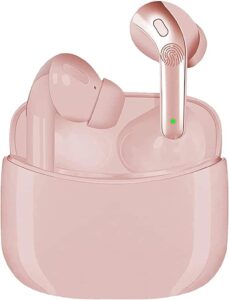Are you frustrated with a keyboard that is unresponsive or acting up? Don’t worry! In this blog post, we will explore some effective solutions to fix the issue and get your keyboard back in working order. Whether you’re facing a non-responsive key, delayed keystrokes, or complete keyboard failure, we’ve got you covered. Let’s dive in and find out how to resolve this common problem.
- Check the Connection: First things first, ensure that your keyboard is properly connected to your computer or laptop. Make sure the USB or wireless connection is secure. If it’s a wireless keyboard, try replacing the batteries to rule out any power-related issues.
- Restart Your Computer: Sometimes, a simple system restart can work wonders. Restarting your computer can help resolve temporary glitches and refresh the keyboard settings.
- Update Keyboard Drivers: Outdated or incompatible keyboard drivers can cause issues. Visit the manufacturer’s website or your computer’s support page to download and install the latest keyboard drivers. This can often resolve compatibility problems and improve functionality.
- Clean Your Keyboard: Accumulated dust, dirt, or debris can hinder key responsiveness. Gently clean your keyboard using compressed air or a soft cloth. Be sure to remove any visible dirt between the keys.
- Disable Filter Keys: Filter Keys is an accessibility feature that can cause delays in keystrokes. To disable it, go to your computer’s Control Panel or Settings and navigate to the Ease of Access section. From there, disable Filter Keys and check if your keyboard starts responding properly.
- Use an External Keyboard: If you have a spare external keyboard, connect it to your computer and check if it works fine. If the external keyboard functions correctly, it might indicate an issue with your built-in keyboard that requires professional assistance.
FAQs (Frequently Asked Questions):
Q1: Why is my keyboard unresponsive after spilling liquid on it?
A: Liquid spills can damage the internal components of your keyboard, causing it to become unresponsive. In such cases, it’s recommended to disconnect the keyboard, clean it thoroughly, and allow it to dry completely. If the problem persists, consider replacing the keyboard.
Q2: What should I do if some keys on my keyboard are not working?
A: If certain keys on your keyboard are unresponsive, try cleaning the affected keys and the surrounding area. If that doesn’t work, consider using an external keyboard or contacting a professional for repairs.
Q3: Why does my wireless keyboard intermittently stop responding?
A: Interference from other wireless devices or a low battery can cause intermittent connectivity issues with wireless keyboards. Ensure that there are no other devices interfering with the wireless signal and replace the batteries if necessary.
Conclusion:
Dealing with a non-responsive keyboard can be frustrating, but with these effective solutions, you can troubleshoot and resolve the issue. Remember to check the connection, clean the keyboard, update drivers, and disable any accessibility features that may affect functionality. If the problem persists, seek professional assistance. Don’t let a malfunctioning keyboard slow you down—get it fixed and regain your productivity!



